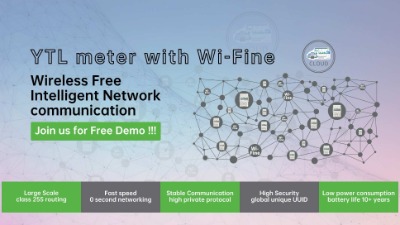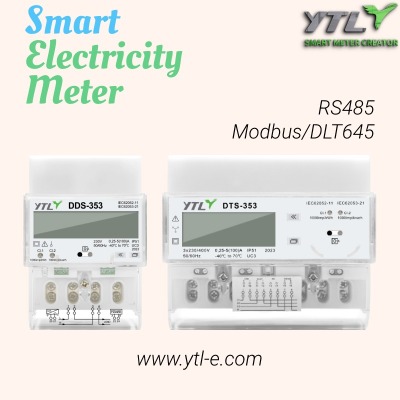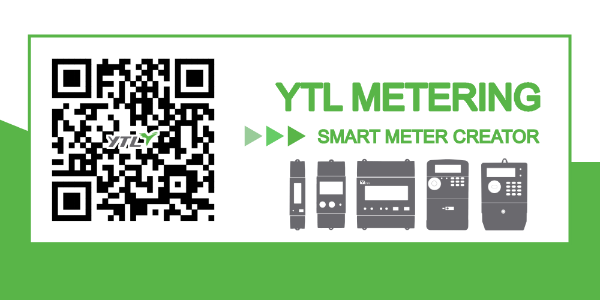Characteristics of LoRa and Wifine Communication
LoRa and WiFine are both low-power wide area network (LPWAN) communication technologies designed specifically for Internet of Things (IoT) applications. With features such as ultra-long communication distance, low power consumption, and easy deployment, they have been widely used in smart cities, industrial automation, environmental monitoring, and agricultural IoT. The following is a detailed analysis of the LoRa and WiFine technologies:

I. Technical features
1. Ultra-long communication distance:
LoRa and WiFine technologies use spread spectrum modulation to enable signal transmission in low signal-to-noise ratio environments, achieving ultra-long communication distances. In open environments, LoRa and WiFine can achieve communication distances of several kilometers or even further, significantly reducing the number of base stations and deployment costs.
2.Low power consumption:
LoRa and WiFine devices have extremely low power consumption in sleep mode, allowing for long standby times without the need for frequent battery replacement. This makes LoRa and WiFine devices particularly suitable for applications that require long-term operation and are difficult to replace the battery.
3. Strong anti-interference ability:
LoRa and WiFine technologies have strong anti-interference capabilities and can stably transmit data in complex environments. Even in complex terrain conditions such as urban environments, mountains, and forests, LoRa and WiFine can maintain good communication performance.
4.Easy deployment and maintenance:
LoRa and WiFine networks use a star topology, eliminating the need for complex network configurations and wiring. Users only need to install LoRa devices in suitable locations to achieve data collection and transmission. In addition, LoRa and WiFine devices support remote configuration and upgrades, facilitating device maintenance and management for users.

II. Application scenarios
1. Smart cities:
LoRa and WiFine technologies can be used in various smart city applications, such as smart transportation, smart security, and smart lighting. Through LoRa and WiFine networks, remote monitoring and management of city infrastructure can be achieved, improving the city's level of intelligence.
2.Industrial automation:
In the field of industrial automation, LoRa and WiFine technologies can be used for remote monitoring of equipment, data collection, and remote control. Through LoRa and WiFine networks, real-time monitoring and early warning of factory equipment can be achieved, improving production efficiency and equipment safety.
3.Environmental monitoring:
LoRa and WiFine technologies can be used in various environmental monitoring applications, such as air quality monitoring, water quality monitoring, and soil monitoring. Through LoRa networks, real-time data collection and transmission of environmental data can be achieved, providing decision support for environmental protection departments.
4.Agricultural IoT:
In the field of agricultural IoT, LoRa and WiFine technologies can be used for monitoring crop growth, greenhouse environmental control, and livestock farming. Through LoRa and WiFine networks, precise management and optimization of agricultural production can be achieved, improving crop yield and quality.

III. Advantages analysis
1. Cost advantage:
LoRa and WiFine technologies use low-power design, reducing the operating costs of devices. Additionally, the deployment costs of LoRa networks are relatively low, with users not having to bear high base station construction and maintenance costs.
2.High flexibility:
LoRa and WiFine technologies have strong flexibility and scalability, allowing customization and optimization according to the needs of different application scenarios. In addition, LoRa and WiFine also support integration with other communication technologies, such as Wi-Fi, Bluetooth, providing users with a wider range of application options.
3.Strong security:
LoRa and WiFine technologies employ various security measures, such as data encryption, authentication mechanisms, to ensure the security of data transmission. In addition, LoRa and WiFine support remote configuration and upgrades, making it convenient for users to secure device management.
IV. Development Prospects
With the rapid development of IoT technology, the application scenarios of LoRa and WiFine technologies will continue to expand, and their development prospects are also very optimistic. Firstly, LoRa and WiFine technologies have achieved initial success in smart cities, industrial automation, and will further deepen their applications in the future, bringing more convenience and benefits to city management and industrial production. Secondly, LoRa and WiFine technologies have broad application prospects in environmental monitoring and agricultural IoT fields, providing better solutions for environmental protection and agricultural production. Additionally, with the gradual popularization of 5G technology and the combination of LoRa and WiFine technologies, it will provide greater momentum for the development of IoT. Overall, as key technologies in the field of IoT, LoRa and WiFine technologies will continue to play important roles in the future, contributing to the development of intelligent IoT.
As low-power wide area network communication technologies, LoRa and WiFine have broad application prospects in the field of IoT. Their ultra-long communication distance, low power consumption, strong resistance to interference, and ease of deployment make LoRa and WiFine technologies the preferred solution in IoT applications. With the continuous development and popularization of IoT technology, LoRa and WiFine technologies will be applied and promoted in more fields in the future.

Comments
Post a Comment